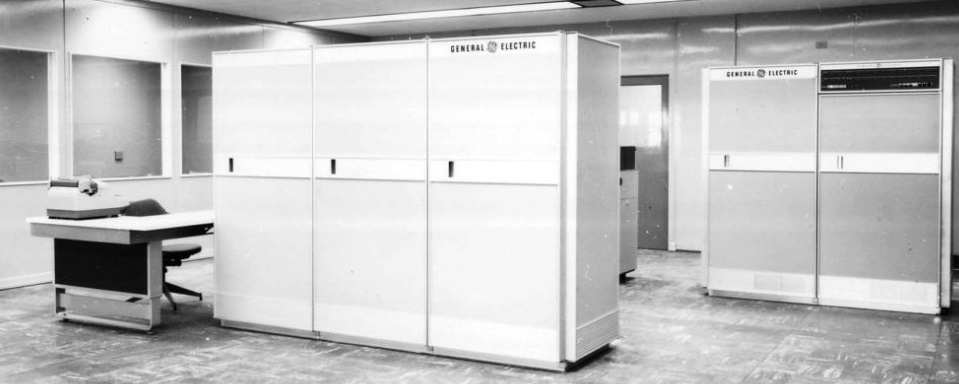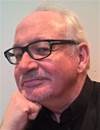Preamble
The Australian Computer Society (ACS) was formed 50 years ago, when the various state computer societies joined forces.
To mark the occasion, the ACS has initiated a heritage project to honour the many individuals who have contributed to the growth of the ICT profession in Australia.
At the heart of the project is a history of computing in Australia. It is not just a history of the ACS, but the history of a profession.
Australia has the longest computing history of any country, excepting the US and the UK, and CSIRAC in the Museum of Victoria is the oldest computer still in existence.
Chapter 21: Other Australian universities
The third and last of our chapters on the early history of computing in Australia’s tertiary sector.
University of Adelaide
Computing at the University of Adelaide started with the Cirrus project in 1963. Cirrus was an advanced transistorised machine, partially designed by Australia’s computer pioneer, Trevor Pearcey. It was replaced by a Data General Nova in 1971.
The university’s proximity to the Weapons Research Establishment, situated at Salisbury in Adelaide’s northern suburbs, meant there was significant local expertise, and the installation of CSIRO’s Control Data 3200 on campus in 1964 further boosted the local scene. So did the appointment of John Ovenstone to the new Chair of Computing Science that year, who instituted the first undergraduate courses in computing at the university. Ovenstone had been largely responsible for the Department of Defence’s first move into computing,
The university’s Institute of Medical and Veterinary Sciences installed a control Data 1700 in 1965, and the Computing Science Department a Control Data 6400 in 1966, which ran until 1977. Ovenstone left in 1970 and Frank Hirst, previously at the University of Melbourne, was appointed in his place the following year. He developed the range of courses further, including the first postgraduate studies. He retired in 1984.
University of Queensland
The story of computing at the University of Queensland began in 1958, when Sydney Prentice, Professor of Electrical Engineering, headed a committee to consider installing one on campus. Prentice had been a consultant to the CSIRO and had become interested in the organisation’s computing activities.
But it was not until 1961 that an order was placed with Australian General Electric for a GE225 computer, which was delivered in March 1962, with the official opening on 1 August.
Donald Overheu, who had worked at the Weapons Research Establishment in South Australia, where we was responsible for the installation of the IBM 7030 that replaced WREDAC in 1961, was appointed Computer Centre Manager. He stayed until 1965, when he joined the Department of Defence’s data processing project, before becoming Head of the School of Computing Studies at the new Canberra College of Advanced Education in 1971.
The university offered a Postgraduate Diploma in Computing Technology in 1965 and in 1970 established a Department of Computer Science, with Gordon Rose, who had been acting head of the Computing Centre since Overheu’s departure, as foundation chair, where he remained until he retired in 1995.
Born in Adelaide in 1930, Gordon Rose worked on many of Australia’s early computers, including SNOCOM, SILLIAC and Cirrus, and the Intergraphic at the University of NSW.
A DEC PDP-8 was installed in 1967, and a dual processor DEC PDP-KA10 in 1968, which enabled timesharing. In 1973 it began offering computer service to the newly established Griffith University.
University of Western Australia
In September 1962, the University of Western Australia installed an IBM 1620, a small ‘scientific computer’. In May 1965, it was replaced by a DEC-PDP-6.
That sale was made by Ron Smart, who had been head of the computing centre at the University of NSW before joining Remington Rand, then DEC. The IBM 1620 remained in use until 1970.
The university was the first user in Australia of DEC’s PDP-6, which it claims was the world’s first commercially delivered timeshared computer. It was used remotely by many other university departments and government agencies.
In 1967 it installed two PDP-10s. In 1972, in conjunction with the WA Institute of Technology (now Curtin University), it established the Western Australian Regional Computing Centre (WARCC), with one of the world’s first Control Data Cyber 72 computers.
University of Tasmania
The University of Tasmania started with an Elliott 503 in 1963, which it shared with the state’s Hydro Electric Commission in the Hydro-University Computing Centre (HUCC).
The shared operation continued until 1976, when the university installed its own Burroughs B6700. The university also had a Burroughs 1900 for administrative work. The Centre’s director was John Boothroyd, who came from England to take up the position. He had previously worked for British computer company English Electric as a senior programmer on the DEUCE.
South African Arthur Sale, who had come to Australia in 1969 to work at the Basser Laboratory at the University of Sydney, was invited to take up the foundation Chair of Information Science in 1974. He was largely responsible for the university to be the first in Australia, along with the University of Melbourne, to offer a full three-year degree in computer science.
Caulfield / Chisholm Institute of Technology
Chisholm Institute of Technology in Victoria began as Caulfield Technical School in 1922. It became Caulfield Technical College in 1958 to reflect its increasingly post-secondary nature. Like Monash, ten kilometres down Dandenong Road, it also acquired a Ferranti Sirius, in 1963.
Its name changed again in 1968 when it became Caulfield Institute of Technology, and then again in 1982 when it merged with the State College of Victoria at Frankston to become the Chisholm Institute of Technology.
Computing at Caulfield began when Austin Lambert was appointed Principal at the beginning of 1959. He proposed that the institution develop a speciality area, as had Swinburne (production engineering) and Footscray (building and construction). He proposed the emerging area of ‘machine computation’.
In July 1960, Lambert prepared a small brochure that advertised a course called ‘Computers in Engineering’. The course was scheduled to run from 3 August to 15 November 1960 and cost each participant £6.
The course received seven applications, and was run without any computers to do practical work. In 1963 the Education Department gave the college a special equipment grant of £57,850, which was used to lease, then buy, the Ferranti Sirius.
Lambert expanded the number of courses and hired John (Jack) White, who had been working with the introduction of computers in Canberra with the Public Service Board, and who immediately set about restructuring the courses and hiring more staff for the new Electronic Data Processing (EDP) Department.
Most were from industry rather than academia, and gave the institution a solid reputation for graduating students strong in the practicalities of computing.
A CDC 160A was added in 1965. In 1969 the Computer Centre was separated from the EDP Department and an ICL 1903A was acquired.
Trevor Pearcey became head of the EDP Department in 1972, and ended his career there, in 1984, as Foundation Dean of the Faculty of Technology. Chisholm Institute of Technology became a campus of Monash University in 1990.
Royal Melbourne Institute of Technology
RMIT began life as the Working Men’s College of Melbourne in 1887. It became the Melbourne Technical College in 1934, the Royal Melbourne Technical College during Queen Elizabeth’s visit to Australia in 1954, and the Royal Melbourne Institute of Technology in 1960.
Computing at RMIT began with the installation of a leased Elliott 803B in the Department of Mathematics in 1962. It was a transistorised machine with ferrite core memory. The main factor that led RMIT to select the 803 was its ability to run the new ALGOL 60 programming language, which had made it the most popular computer in British universities.
ALGOL (ALGOrithmic Language) was introduced in 1960 and became very influential in the development of programming languages and was widely used to teach programming, although it did not get much commercial use.
RMIT offered one of the first computer science courses in Australia, starting in 1964. The School of Computer Science and Information Technology became a separate academic department in 1980.
RMIT merged with Phillip institute of Technology in 1992 to become RMIT University.
Veteran ICT journalist Graeme Philipson is researching and writing the Heritage Project book, which is due for release on the 50th anniversary of the formal incorporation of the ACS, on 3 October 2017.
The project also involves the creation of a ‘virtual museum’, cataloguing hardware and other artefacts, and collecting and curating documents on the history of the industry, including oral histories of as many people as possible.
Please get in touch with Graeme if you would like to contribute, at [email protected]
Do you have early memories of the ICT industry in Australia? Help us make history by sending us your story! Record or write your memories to be included in our historic ACS Heritage Project. Details here.
Previously published:
Chapter 20: University of Melbourne and Monash
Chapter 19: Sydney University and UNSW lead the way
Chapter 18: Computing in the Australian Government
Chapter 17: Trevor Pearcey and the birth of CSIRONET
Chapter 16: Enter the minicomputer – DEC comes to Australia
Chapter 15: The IBM S/360 in Australia
Chapter 14: IBM redefines the computer industry
Chapter 13: Control Data Australia (part II)
Chapter 12: Control Data Australia (part I)
Chapter 11: The Australian Computer Society
Chapter 10: Five Computer Societies
Chapter 9: Australian made, Australian designed
Chapter 8: Australia's Computer Industry in 1962
Chapter 5: SILLIAC and the Snowy Mountains Scheme
Chapter 3: Harry Messel and the birth of SILLIAC










